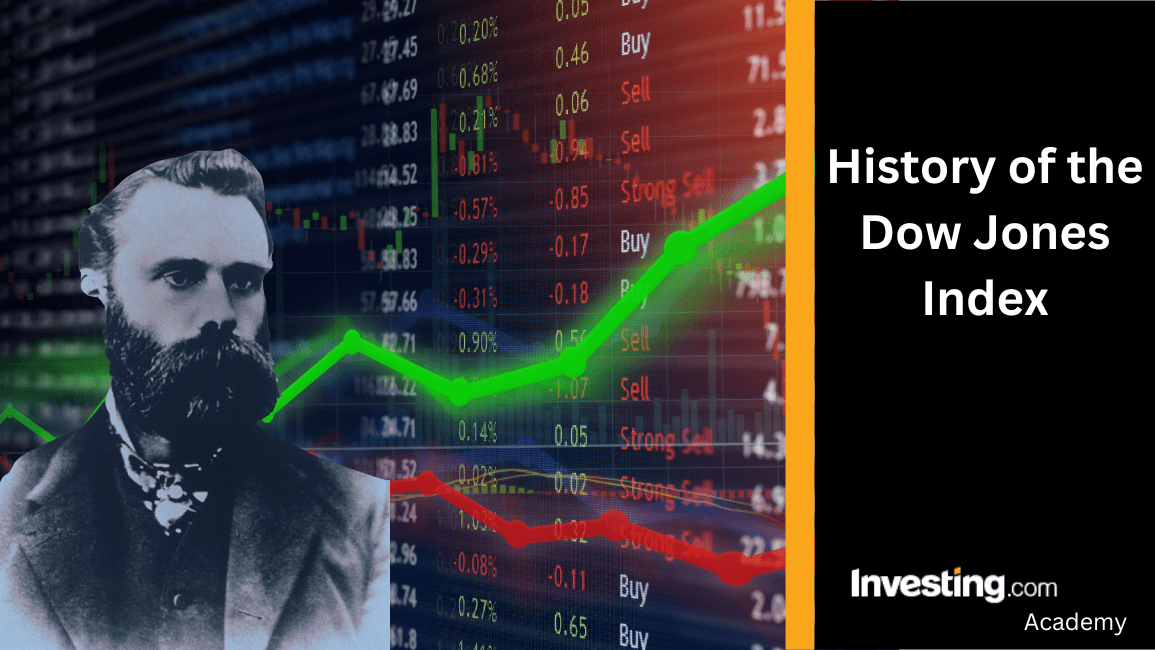Understanding Dow Jones Index Holdings: A Comprehensive Guide
The Dow Jones Index Holdings represent a critical component of the financial markets, reflecting the performance of 30 prominent companies in the United States. This index serves as a barometer for the overall health of the economy and provides insights into market trends. In this article, we will delve into the intricacies of the Dow Jones Index Holdings, exploring its significance, components, and the factors influencing its fluctuations.
The Dow Jones Industrial Average (DJIA), often simply referred to as the Dow, was established in 1896 and has since evolved into one of the most widely recognized stock market indices in the world. As we navigate through the complexities of this index, we will discuss its historical context, the criteria for inclusion in the index, and how investors can leverage this information for better investment decisions.
This comprehensive guide will also highlight the importance of understanding the Dow Jones Index Holdings for both seasoned investors and newcomers to the financial market. By the end of this article, you will have a thorough understanding of the Dow Jones Index, its current holdings, and how it can impact your investment strategy.
Table of Contents
- 1. History of the Dow Jones Index
- 2. Components of the Dow Jones Index Holdings
- 3. Criteria for Inclusion in the Dow Jones Index
- 4. Performance Metrics of the Dow Jones Index
- 5. Investing in Dow Jones Index Holdings
- 6. Market Impact of the Dow Jones Index
- 7. Future of the Dow Jones Index
- 8. Conclusion
1. History of the Dow Jones Index
The Dow Jones Index has a rich history that dates back over a century. Created by Charles Dow, along with Edward Jones and Charles Bergstresser, the DJIA was initially composed of 12 industrial companies. Over the years, it has expanded to include 30 major corporations, reflecting the growth and changes in the American economy.
Significant milestones in the history of the Dow include:
- 1896: Establishment of the Dow Jones Index with 12 companies.
- 1928: Expansion to 30 companies, which remains the current structure.
- 1985: Introduction of the price-weighted calculation method.
- 2001: Inclusion of technology firms, reflecting the rise of the tech industry.
2. Components of the Dow Jones Index Holdings
The Dow Jones Index Holdings currently consists of 30 prominent companies, representing various sectors of the economy. These companies are selected based on their market capitalization, liquidity, and reputation. Some of the most notable components include:
| Company | Sector |
|---|---|
| Apple Inc. | Technology |
| Microsoft Corporation | Technology |
| IBM Corporation | Technology |
| JPMorgan Chase & Co. | Financial Services |
| Walmart Inc. | Consumer Goods |
| Coca-Cola Company | Consumer Goods |
These companies are crucial to the economy, and their performance directly influences the index's value.
3. Criteria for Inclusion in the Dow Jones Index
The selection of companies for the Dow Jones Index is not arbitrary; it follows specific criteria established by the index committee. Key factors for inclusion include:
- Market Capitalization: Companies must have a significant market capitalization.
- Liquidity: Stocks must be actively traded to ensure they can be easily bought or sold.
- Reputation: Companies should be leaders in their respective industries.
- Historical Performance: A strong track record in terms of financial performance is essential.
4. Performance Metrics of the Dow Jones Index
The performance of the Dow Jones Index is measured in various ways, providing insights into market trends. Common performance metrics include:
- Price Changes: Monitoring daily fluctuations in stock prices.
- Annual Returns: Evaluating the index's performance over the year.
- Volatility: Assessing the stability of the index through standard deviation.
Understanding these metrics can help investors make informed decisions.
5. Investing in Dow Jones Index Holdings
Investing in the Dow Jones Index Holdings can be a lucrative strategy for both novice and experienced investors. Here are some ways to invest:
- Exchange-Traded Funds (ETFs): ETFs that track the DJIA allow investors to buy a diverse portfolio of stocks.
- Mutual Funds: Many mutual funds aim to replicate the performance of the Dow Jones Index.
- Direct Stock Purchase: Investors can buy shares of individual companies within the index.
6. Market Impact of the Dow Jones Index
The Dow Jones Index has a significant impact on the broader market and economic sentiment. When the index rises, it typically indicates a healthy economy, leading to increased consumer confidence and spending. Conversely, a decline in the index can lead to market panic and reduced investment.
7. Future of the Dow Jones Index
The future of the Dow Jones Index will likely be shaped by several factors, including technological advancements, economic shifts, and changes in consumer behavior. Analysts predict that the index will continue to evolve, potentially incorporating more technology and renewable energy companies in the coming years.
8. Conclusion
In conclusion, the Dow Jones Index Holdings are a vital indicator of the health of the U.S. economy and financial markets. Understanding its components, performance metrics, and the criteria for inclusion is essential for anyone interested in investing. We encourage you to explore further and consider how the Dow can fit into your investment strategy.
Feel free to leave your thoughts in the comments below, share this article with fellow investors, or check out more articles on our site for additional insights.
Thank you for visiting, and we look forward to seeing you again!
Unlocking The Power Of Planks Exercise: Your Ultimate Guide To Core Strength
Ecuador Roster: An In-Depth Look At The National Football Team
Understanding DXC Technology: A Comprehensive Guide


